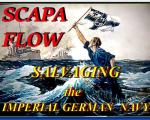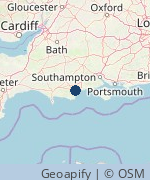SCAPA FLOW - Salvaging the IMPERIAL GERMAN NAVY
KEVIN PATIENCE SpeakerNet Sponsor
- Region:
- Anywhere
- Notice Period:
- Emergency (maybe less than one week's notice)
- Type:
- Hobby
- Fee:
- Paid: £65
- Category:
- History
- Updated:
- 30th March 2024
- Tagged:
- Naval Salvage / World War 1
The story behind the Royal Navy's Dreadnought battleship of 1906 and the naval arms race that led to the Battle of Jutland in 1916. In June 1919 seventy four interned German warships were scuttled by their crews at Scapa Flow in Orkney, and in 1924 Ernest Cox with no salvage experience took on the largest maritime salvage operation in history and raised thirty two warships in seven years.
Views: 833 | Enquiries: 1About KEVIN PATIENCE
I grew up in Kenya and served in the Royal Air Force, who also taught me to dive. On leaving the service I completed a commercial diving course, returned to Mombasa and was involved in salvage operations on the Kenya coast. In 1976 I published my first book on East African railway history and in 1977 became a commercial diver in the Arabian Gulf based in Bahrain and later established a marine salvage company. In 1982 I was appointed MD of a Kenya diving company in Mombasa responsible for operations in East Africa and later returned to Bahrain and established a new diving company with contracts in the Gulf and East Africa. With an interest in military history I was involved in the restoration of British Forces graves in Bahrain, and the recovery at sea of a propeller from a crashed Air France airliner as a memorial to those killed and was honoured by the French government. In the 1990s I published a number of books on the military and transport history of East Africa and an acclaimed study of the German cruiser ‘Königsberg’ sunk in East Africa in 1915. Later writing articles for a number of aviation, medal and railway journals. In recent years I co-organised steam train safaris in East Africa and led World War 1 Kenya battlefield tours. Now resident in the UK, writing and research continues, together with presenting talks on a variety of subjects.
Other Talks on SpeakerNet by KEVIN PATIENCE
- The AFRICAN QUEEN’ - The true story behind the 1953 film
- OPERATION MINCEMEAT and THE MAN WHO NEVER WAS
- The BRIDGE over the RIVER KWAI and the DEATH RAILWAY
- The AIR FRANCE aircraft accidents at BAHRAIN - 1950
- AVIATION around POOLE BAY 1910-1976
- 'SHOUT AT THE DEVIL' - The Destruction of the German cruiser KÖNIGSBERG - 1915
- SALVAGE MASTER - A Career in Commercial Diving and Marine Salvage
- BUILDING the East African LUNATIC LINE - 1896 - 1901
- ROLLS- ROYCE and the SILVER LADY
- TREASURES from the DEEP
- GARRATTS - BEYER PEACOCK'S GIANT LOCOMOTIVES
- HANCOCK'S QUEST - The search for the Sailor behind the medals
- HERA - A Cornish Shipwreck Tragedy
- SEND a GUNBOAT - The ROYAL NAVY in EAST AFRICA in the 19th Century
- The BOMBAY EXPLOSION and the day it rained GOLD
- The TRAFALGAR LADIES - 21 October 1805
- TWO SETS of MEDALS - A genuine unique issue to the same gentleman
- SEA SAFARI - Travels on the British India Line
- WW 1 in KENYA - 1914 - 1916
Send a message to the speaker
If you are interested in this talk and wish to contact the speaker, please complete the following form:


